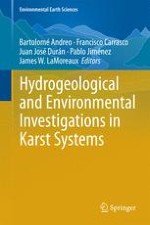WATER RESOURCES AND ENVIRONMENT provides a detailed introduction to the full range of advanced, multidisciplinary techniques used in the study of water resources from understanding individual aquifers to the protection and management of water in a sustainable way, compatible with the preservation of the environment. Based on a masters course from UNESCO’s International Hydrological Program, this textbook is accompanied by color figures and graphics, illustrating clearly the content of the text and showing real examples from the field. Each chapter also contains a list of exercises and practical activities as well as case studies.
